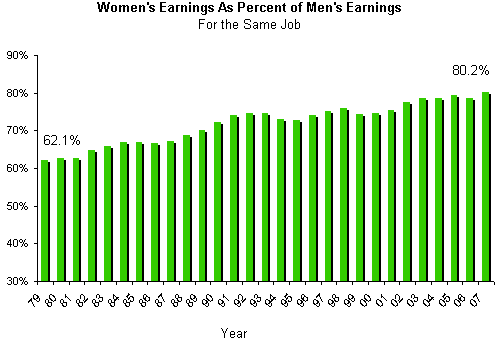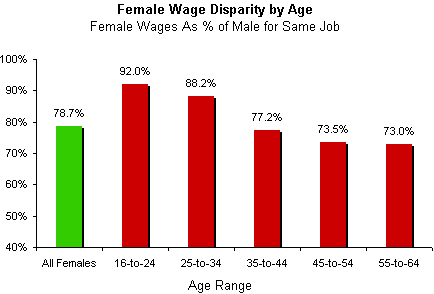IDEX Online Research: Jewelers - Target Female Self-Purchasers, Part V
July 22, 09
The model family of the 1950s, Dad is the sole earner and Mom is at home cooking three hot meals a day, is hard to be found in the U.S. these days. In this multi-part series, we are looking at what this means for jewelers. The good news: more women than ever before work outside of the home and now have the discretionary income to buy jewelry for themselves. The opportunity: Women are earning more.
Women Earning More Money
Along with rising labor force participation, women’s earnings have risen relative to men’s earnings. The old adage that you can pay a woman less than a man to do the same job has been shattered in American society. Federal law makes it unlawful for employers to discriminate on the basis of gender (or race, creed, and other demographic traits), so the pay for a job must be the same, no matter who performs the work.
Unfortunately, there is still some disparity between men’s pay and women’s pay for the same job, but the gap is being closed rapidly, especially among younger workers.
The graph below illustrates how women’s wages have risen, as a percentage of men’s earnings for the same job.

Source: BLS
By age group, the least disparity between women’s and men’s wages occurs among younger workers. Young women today have an expectation to earn the same as men; it has been ingrained into their generational culture. Conversely, the most disparity in wages between the genders occurs among the oldest workers.
The graph below illustrates the female wage disparity by age group. Clearly, the gender gap on wages is closing, especially among younger workers.

Source: BLS
In addition, the ratio of female-to-male earnings varies by place of residence, ranging from 62 percent in Wyoming to 89 percent in the District of Columbia. The differences among the states may reflect variation in occupations and industries as well as the age composition of the population.